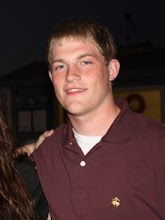Chromatic
Low-Key
High-Key
Achromatic
Friday, February 25, 2011
Sunday, February 20, 2011
Comparisons of Virtual Starry Night and Crows
In both of the videos, the viewer sees different representations of Van Gogh’s work. Through Van Gogh’s Starry Night and a recreation of it on the computer game, Second Life, we see that both are almost identical, sharing everything from the Church- building to the skycaps of mountains and stars. However, the recreation gives the viewer a total hands-on view of the environment. What was once only one perspective now becomes a landscape to explore. The creator of the replica also put in a lot of new aspects into the work. Since only one perspective is available in Van Gogh’s work, the creator had to make up some of the other visual parts in the 3-D world on his own.
In Crows, the viewer is literally brought to life in the paintings, seemingly blurring reality and art. He is able to even (try) to have a conversation with the painter himself.
In the Second Life version of Starry Night, the viewer has many freedoms in viewing the work, but only through the virtual realm. The short film, Crows, depicts the man viewing the art in a physical state, but this is only in a dream-like state. Either way, both are inaccessible in actual, physical reality.
Art and Reality
For the art world, the past few decades have brought up millions of new grounds on which to demonstrate art. With the rise of computers and the Internet, the physical constructs of art are now forming to visual art, that which resides in the world of the hard drive. Space has grown to become even more important in the computerized environment with hyperformalism. The possibilities are endless in the online world: 2-D and 3-D physical pieces of art have been revolutionized into 4-D, in which the viewer can change perspective with the move of a mouse and truly experience the art through manipulation. But the reality of the art does not change.
William Saroyan said that “the role of art is to make a world which can be inhabited”. But how much of this world can be real versus superficial? Krau’s article maintains the idea that although technology is making art more and more realistic, and it is “not possible for any art to reproduce reality in its entirety, and we must remain aware that there is no objective appropriation of reality”. The two are closely bound, but ever distant. D.C. Spensley delves into the idea of hyperformalism. He also believes that the use of art on the computer can never be reality.
Wednesday, February 16, 2011
Sunday, February 13, 2011
Wednesday, February 9, 2011
Wednesday, February 2, 2011
Subscribe to:
Posts (Atom)













